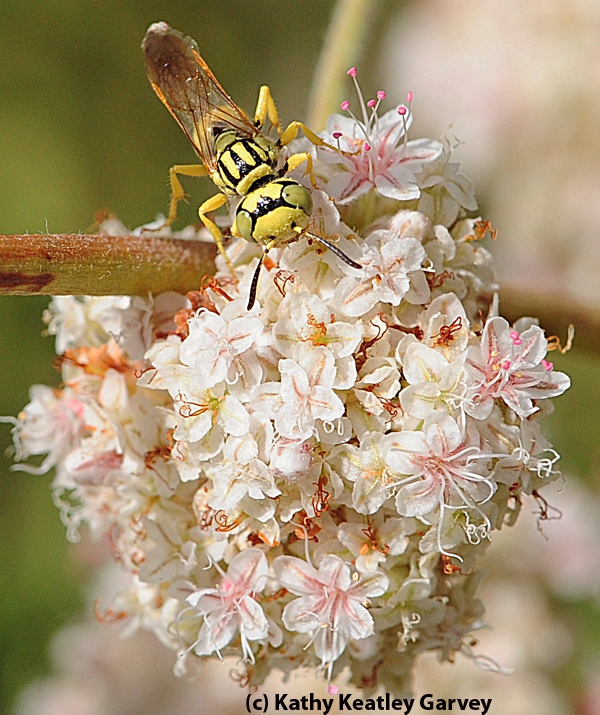
You sip some nectar, and suddenly, a flash of yellow.
A wolf is at your door.
It's a beewolf, a crabronid wasp from the genus Philanthus, as identified by Lynn Kimsey, director of the Bohart Museum of Entomology and professor of entomology at UC Davis, and native pollinator specialist Robbin Thorp, UC Davis emeritus professor of entomology.
Beewolves, also known as bee hunters, prey upon small bees, thus their name. They carry their kill to their offspring in their underground nests.
The beewolf we saw yesterday wasn't big enough to prey on a honey bee, but yes, there are European species, European species, Philanthus triangulum, that can.
Thorp says that this particular beewolf (below) appears to be a Philanthus multimaculatus. Check out the BugGuide.net image.
So tiny, but so colorful, too.
Attached Images:

A beewolf, or crabronid wasp, on buckwheat. (Photo by Kathy Keatley Garvey)

Beewolf maneuvering around the buckwheat. (Photo by Kathy Keatley Garvey)

Close-up of beewolf head. (Photo by Kathy Keatley Garvey)

Beewolf lands on the same flower occupied by a hungry praying mantis. The wasp quickly left. (Photo by Kathy Keatley Garvey)